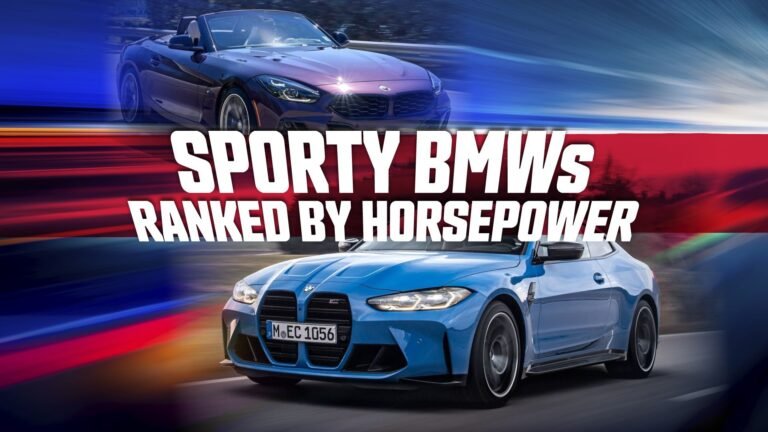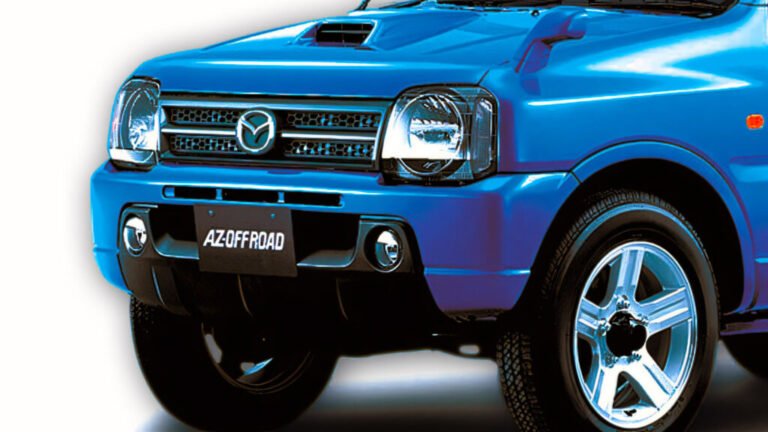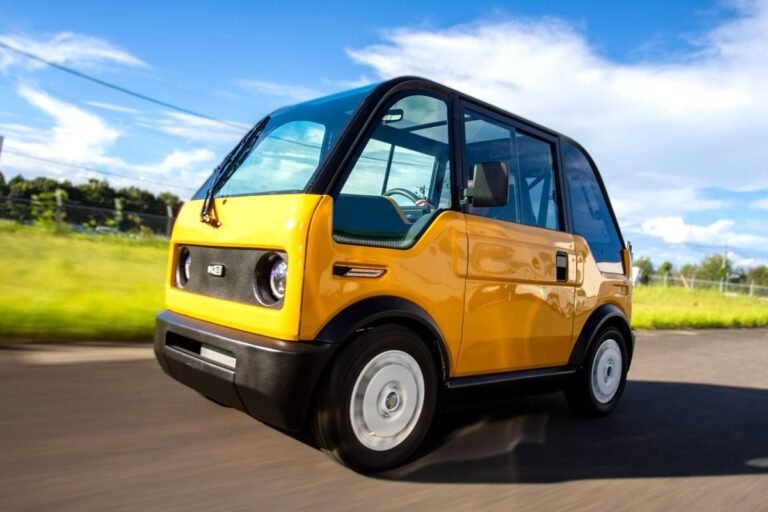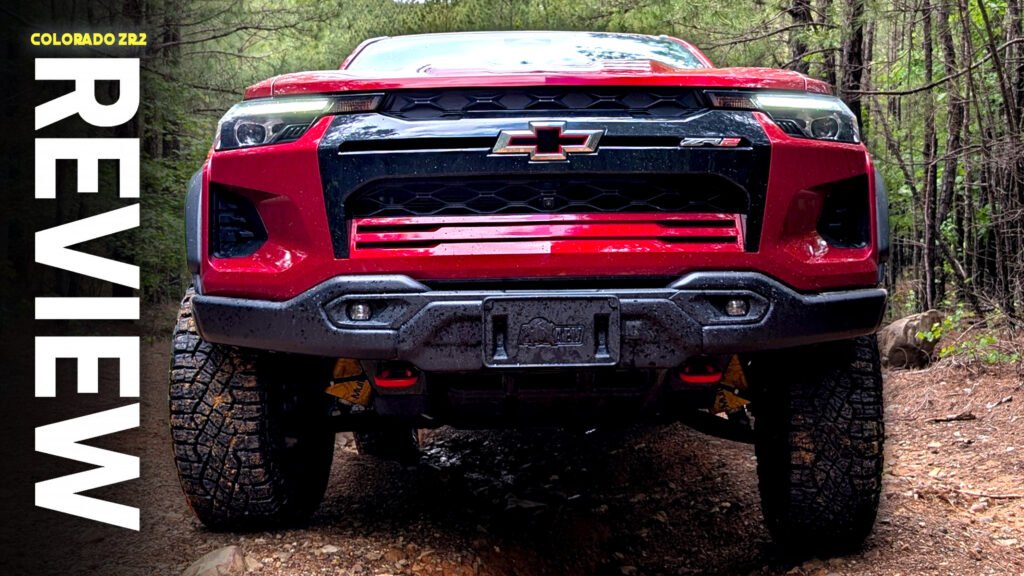

Chevy’s midsize pickup isn’t just holding its own – it’s thriving. In a market dominated by bigger, flashier trucks, that’s no small feat. While full-size trucks tend to soak up the spotlight, the Colorado has steadily carved out a following by getting a lot of the fundamentals right.
Last year alone, Chevrolet moved 98,012 units of the Colorado, an impressive 37.9 percent increase over 2023. Not bad for a platform that hasn’t had a full overhaul in years. So how does a mid-size truck stay relevant long enough to outsell the Jeep Gladiator and Ford Ranger combined? Fresh trims like the one pictured here certainly help.
This is the Bison, the most capable and well-equipped member of the Colorado lineup. It takes everything the ZR2 already offers and layers on even more kit aimed squarely at serious off-roaders. Go for the standard ZR2 and you’ll get a lift kit, rock sliders, and a few other key upgrades we’ll get into shortly. But to get the full setup you see here, you’ll need to add the Bison package on top.
QUICK FACTS
SWIPE
The result is a truck that certainly looks like it can go just about anywhere. To find out if that was really true, though, we spent a full week with one and didn’t keep it on the pavement. Instead, we spent multiple days taking this truck in places some owners will never dare: deep off-road, where the only way out is through.
Styling
Photos Stephen Rivers for Carscoops
Take one glance at the Bison and it’s clear that we’re not dealing with an everyday work truck. It’s full of bulges, flares, vents, and more. Having tested several trucks this year, including the Ram RHO, I can attest that this thing turns as many, if not more, heads than the rest.
Under the aggressive-looking hood is the same 2.7-liter turbocharged four-cylinder you’ll find in every other Colorado. That means it makes 310 horsepower and 430 lb-ft ( Nm) of torque.
Is it a letdown that this ‘ultimate Colorado’ makes the same power as the base ‘Work Truck’ trim? Yes. Still, it moves just fine as is with the help of an eight-speed automatic gearbox and standard four-wheel drive in this guise.
That said, it’s also worth noting that the Colorado, regardless of trim, is only available with a crew cab and a short bed. Sure, that limits just how much truck stuff one can do with it, but Chevrolet clearly thinks it’s what buyers want, otherwise, it would’ve kept other options around.
Despite that, the rest of the stats on paper are solid. The Colorado ZR2 Bison can tow as much as my 2010 Ford Flex, 5,500 pounds, and has a 1,160-lb payload capacity.
Interior

Packaging is a funny thing in the truck world. As I write this, I have a heavy-duty truck in the garage for testing. It has less cabin space than the Colorado, where I found no issue with headroom, legroom, knee room, or any other type of room. The Bison doesn’t give up anything in its interior for its extra capability externally.
In fact, as the flagship version, it’s filled with bits and bobs that truck lovers will appreciate. The steering wheel is simple and straightforward. The switchgear feels and looks cheap, but it gets the job done. The center control stack is largely problem-free as it features several physical knobs and switches for easy use.
They include both the climate settings along with several extra functions like differential lockers, lane-keep assist, and even a button that controls all the windows at once. An additional AUX switch is sitting there, prewired for whatever extra gear one might want to add after purchase. The drive-mode knob takes a little getting used to as it spins to change mode but also has buttons to switch between 2WD, 4WD High, and 4WD Low.
Photos Stephen Rivers for Carscoops
That said, it’s a handsome cabin with what appear to be very durable and attractive textures. The biggest gripe is the continued use of piano black plastic that collected dust so quickly that we couldn’t avoid it getting into the photos you’ll see here. The seats are supportive and comfortable, though a touch more lateral bolstering would be great.
The rear seats are very basic, but they do come with similar upholstery schemes and contrast stitching. Occupants get access to power ports and climate vents. Beneath the seats, you’ll find the jack along with some additional storage space.
The infotainment system features Google Built-In, which makes those who already use Android very happy. The system is fast, full of great features like real-time pitch and roll measurements, trailer controls, and Amazon Alexa. It and the digital gauge cluster are easy to navigate and provide a little bit of polish to this otherwise rugged pickup.
Drive Impressions

The Colorado ZR2 Bison is as much of a driver’s pickup as you’ll find in the off-road segment. On pavement, where the vast majority of buyers will spend their time, it doesn’t feel out of its element. The engine is more than potent enough to get up to highway speeds and pass whenever prodded. It’s relatively nimble, it provides good steering feedback, and doesn’t dip and roll like so many of its predecessors.

The DSSV Multimatic suspension here includes both position-sensitive dampers and jounce dampers. That means that they react not just to the terrain but cushion the entire vehicle should one find the limit of travel. They are shockingly good in just about every condition one could imagine. Zipping around a parking lot, they help the Colorado corner flat and maintain its line.
Driving at a good clip off-road, one can switch to Baja mode, and the truck will do an incredibly convincing imitation of a trophy truck, soaking up sharp bumps with aplomb. Turn that drive-mode knob to Off-Road or Terrain, and the entire suspension becomes capable of things a contortionist would be impressed by.
Photos Stephen Rivers for Carscoops
Take a look, for example, at just how much travel we got out of the Bison while climbing up a steep, uneven section of trail. Despite a huge rut and lots of slippery gravel, this beast of burden trundled through it effortlessly. On another pitch with even steeper terrain and more mud than gravel, the Bison didn’t so much as spin a tire despite having its huge 35-inch tires caked in mud.
This really is one of the most capable pickups on sale right now, and it manages that with just a four-cylinder engine and sizing that has no connection to compensating for other shortcomings. Of course, it’s not perfect.
That engine is certainly more than powerful enough and is capable of achieving better fuel economy than the previously available V6. Despite that, it’s dreadful to listen to day in and day out. I don’t remember the last time I tested a car that received so many unsolicited, less-than-positive comments from friends and family about its exhaust note. Would a V6 have sounded better? Who knows, but this thing drones at times, sounds strange at startup, and is otherwise nowhere near as inspiring as its exterior design suggests.
Speaking of fuel economy, the Bison is flexible here. Over 166.4 miles, we achieved 14.7 mpg, which sounds rough compared to its 16 mpg claims, but keep in mind that much of our time behind the wheel was off-road. That said, a shorter 10.9-mile trip saw it achieve 19 mpg, so it’s possible to get decent mileage in the right conditions.
The Biggest Drawback Of The Bison

Visibility is a major issue we need to discuss. From the driver’s seat, everything is fine. The mirrors provide solid blind-spot coverage when set to the SAE-standardized configuration. The issue is specific to the Bison, though, because it automatically comes with a 35-inch spare tire mounted on the driver’s side of the bed facing the cabin.
That makes rearward visibility feel like a complete afterthought. I’m not saying it blocks 15-20 percent of one’s view. We’re talking roughly 60 percent of rearward visibility is just gone. In fact, things got worse because when I first noticed this issue, I thought, “No worries, let me just flip on the digital rearview mirror, after all… this is the ultimate usage case for such a thing.”

I was surprised to realize that the Colorado ZR2 Bison doesn’t get a digital rearview mirror but instead has the same old-school type you’d get in a 1990 Chevrolet Lumina. Thinking that this must simply be an accidental oversight, I jumped onto the Colorado configurator and, to my shock, couldn’t find the option to add a digital rearview mirror.
At this point, I reached out to Chevrolet. Sure enough, it’s impossible to outfit what is, already in this spec, a $66,000 truck, with a digital rearview mirror even though there’s a feature that blocks one’s view of the things behind you. Onward I suppose, damn whatever would be in the rearview mirror if a giant tire wasn’t there.

It’s worth noting that it’s absolutely plausible to remove the tire and just put it back on whenever you decide to go off-roading but then you don’t have a spare at all when, let’s say, you get a nail in a tire while cruising your local Bass Pro Shop.
Competition
The mid-size truck segment has never been as good as it is right now. The Chevrolet Colorado is just one of many available jewels in this bag. We’ve tested the GMC Canyon when it first came out and liked it too. The Nissan Frontier might be the weakest truck in the bunch, but it’s charmingly basic, and that’s exactly what some buyers need. It’s relatively inexpensive compared to the rest of the market and offers different cabs and beds, too.
The Toyota Tacoma is notable because it offers not one but two off-road-focused trims in the TRD Pro and Trailhunter, with the former focusing on hardcore off-roading and the latter on overlanding. They’re both great – an They’re also both very expensive, with starting prices north of $66,000.
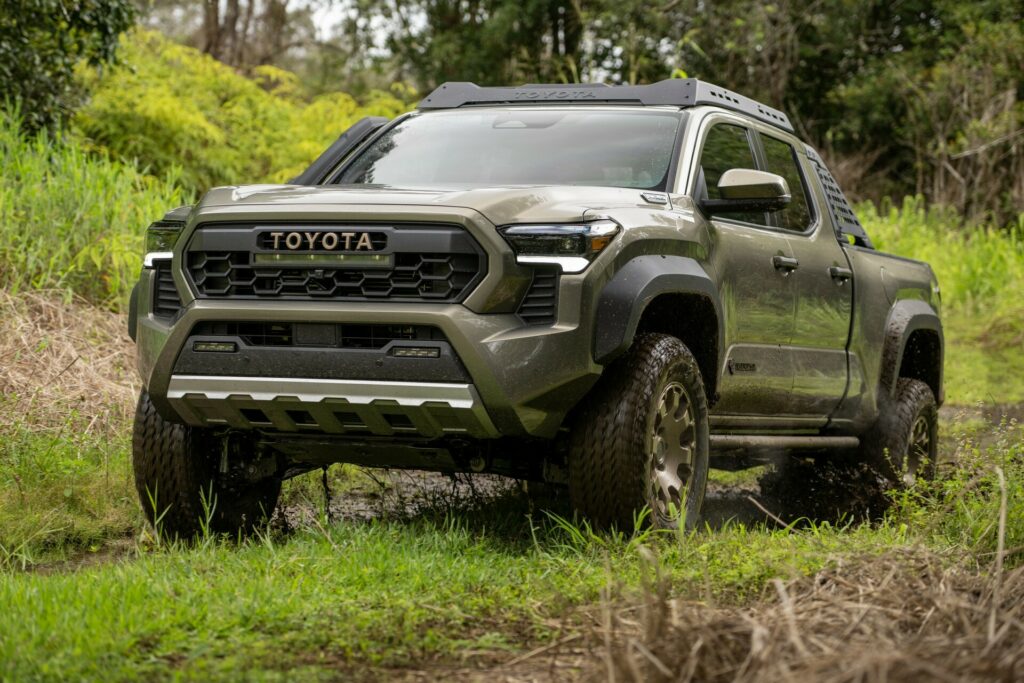
At the end of the day, each of the available options feels like it has its own niche. The Frontier is an old-school truck available for less than most of the alternatives. The Tacoma has a huge spread of available trims and capabilities. The GMC Canyon is the posh version of the Colorado, and the Bison is Chevrolet blending a little bit of old-school simplicity with new-school tech.
None of them are bad, and all have niche followers for good reason. The Ford Ranger Raptor might be the best of the bunch, though. While I haven’t gotten behind the wheel yet, our very own Brad Anderson has and says it’s an absolute hoot to drive. The numbers look great, too, since it offers lots of power and performance with a base price of just $57,765. Remember that figure.
Pricing And Which One To Buy

Before moving on to final thoughts, we have to talk about pricing because it’s a huge piece of this truck. The ZR2 package starts at $51,295, and that’ll get you the Multimatic dampers, a 3-inch lift, fender flares, the Flow tie, and the off-road fascia. It also automatically includes 33-inch mud-terrain tires, rock sliders, 17-inch wheels, the drive-mode selector, and the 310 horsepower engine.
Upping one’s choice to the Bison package tacks on an additional $11,700 for a total price of $62,995. Notably, one gets a lot for that cash, including 35-inch tires, beadlock-capable wheels, Multimatic jounce control dampers, the bed-mounted spare-tire carrier, and all of the AEV stuff. Is that a price I’d personally pay? No, and here’s why. The standard ZR2 is already wildly capable and has most of what one needs if they plan to off-road this truck.
In addition, Chevrolet deserves a lot of credit here for allowing buyers to add in a lot of features as if they’re ordering off an à la carte menu. I’d get the ZR2 and then add tech bronze recovery hooks for $150, underbody cameras for $500, the tech package for $1,450, and the Multimatic jounce control dampers for $2,675.
No, this build doesn’t include 35-inch tires, but it adds cameras that you won’t get on the Bison, can tow 500 pounds more, and costs just $56,070. At that price, it undercuts Toyota’s Tacoma Trailhunter and TRD Pro significantly without losing much in the way of actual performance. It also happens to eschew hybrid componentry for those who prefer to avoid it.
Final Thoughts

The Colorado ZR2 Bison is a genuinely fun truck. It’s wildly capable, it looks awesome, and it’s the right size for someone who is going to use it as a daily driver. At the same time, it’s very expensive when compared to its main competition, the Ford Ranger Raptor. Even the trimmed-down à la carte version we just discussed offers almost no savings over Ford’s wildest mid-size truck.
On the other hand, when compared to trucks from Toyota, Nissan, and even GMC, the Colorado ZR2 is a better truck overall. Sure, the Bison will set you back almost as much as a Trailhunter or TRD Pro, but the point is that brand-faithful buyers now have a plethora of options. Of all the trucks I’ve tested so far this year, the Bison is the one I wish I could keep.
Photos Stephen Rivers for Carscoops
